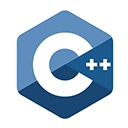While C++ is not a traditional choice for web development, it is possible to leverage C++ for web applications using technologies like WebAssembly. WebAssembly is a binary instruction format designed for safe and efficient execution on web browsers, and it enables running C++ code in the browser environment.
1. C++ and WebAssembly
WebAssembly (Wasm) allows developers to execute code at near-native speed in web browsers, making it an attractive option for bringing C++ code to the web. Key points to consider when using C++ and WebAssembly for web development include:
- Performance: C++ is known for its performance, and WebAssembly allows you to harness this performance in the browser without sacrificing speed.
- Use Cases: C++ in the browser can be used for applications like online games, simulations, scientific computing, and more that require high-performance calculations.
- Tooling: You will need tools like Emscripten to compile C++ code to WebAssembly and integrate it with web applications.
2. Sample Code: Using WebAssembly with C++
Let's demonstrate a simple example of using C++ with WebAssembly to display a "Hello, Web!" message in a web browser:
#include <iostream>
int main() {
std::cout << "Hello, Web!" << std::endl;
return 0;
}
To compile and run this code in a web browser, you'll need to use a tool like Emscripten. Emscripten can compile C++ code to WebAssembly and generate JavaScript bindings to interact with the browser's Document Object Model (DOM).
3. Conclusion
C++ for web development is an unconventional but powerful approach, particularly when you need to run performance-critical code in the browser. WebAssembly opens the door to integrating C++ with web technologies. Keep in mind that while this approach is suitable for specific use cases, more conventional web development languages and frameworks like JavaScript and Node.js are better suited for typical web applications.

